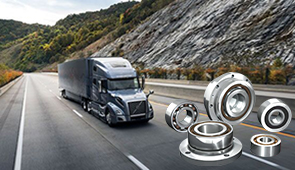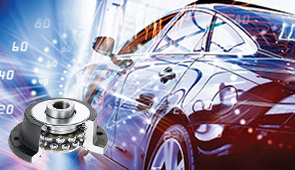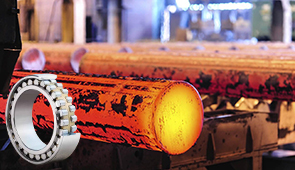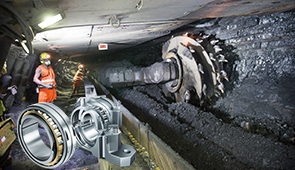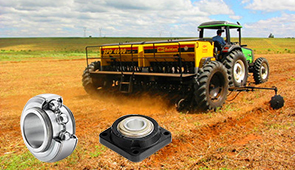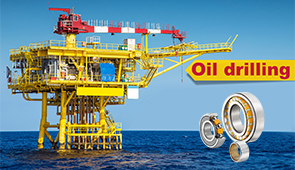Understanding Cam Follower Bearings: Everything You Need to Know
Cam follower bearings are a critical component in the world of mechanical engineering, playing an essential role in a wide range of applications from conveyor systems to automated machinery. Despite their widespread usage, understanding how cam follower bearings function, their various designs, and the advantages they offer can be a complex topic to tackle. This guide aims to demystify cam follower bearings, offering a comprehensive overview of their purpose, construction, and applications. Whether you’re a seasoned engineer or a curious enthusiast, this article will equip you with the knowledge needed to leverage these versatile components effectively.
What is a Cam Follower Bearing?

Definition and Purpose of Cam Followers
Cam follower bearings are part of a specialized set of rolling elements meant to perpetually follow the precision motion of a cam in mechanical systems. Their primary function is the smooth transfer of motion and force while friction and wear on the interacting parts are kept to a minimum. Such components are used in cases where tracking of linear or rotational movement of curves is needed.
A cam follower is made of a roller or needle element, which is a solid cylinder encased in a thick outer ring. This design improves the ability to carry the load without deformation under very high pressures. Many cam followers have a stud or a yoke that serves as a mounting point, making their fixation easier and aligning them properly with the rest of the machine. Some variations may also incorporate features like a crowned outer ring to enable them to bear small shifts and still function.
Industries rely heavily on cam follower bearings. They are extensively utilized in automatic machines, conveyors, material handling processes, and in the textile industry. Mechanical components are also put into motion through the aid of cam followers, and controlled movement and forces that cam followers facilitate are very essential. The precise application of movement enables mechanical systems to function smoothly in harsh conditions. They need to work against the adaptability and challenging environment motion, which makes them very resilient to damage.
Components of a Follower Bearing
A follower bearing comprises several pivotal parts that work in unison to ensure seamless operation in various machines. The most vital component is the outer race, which is made out of hardened steel due to its ability to deal with high stresses or high-speed situations. Follower bearings are commonly made from hardened steel since they endure abrasion from the cam or track surface. This specific component spreads the load to the surfaces uniformly.
Depending on the follower bearing used, roller elements serve as another important part of the bearing. Roller elements can also be made up of needle rollers, balls, or cylindrical rollers, which all depend on the operational needs of the application. Rollers are known to aid in coping with friction in rotational movement and in smooth running. A certain cage or retainer guarantees the precise spacing between these rollers of the cage, thus greatly improving the efficiency while reducing abrasion of the followers.
A bearing’s mounting structure is given by the inner race or stud. Stud-type cam followers are known to provide a threaded shaft for direct bolt attachment to machines, whereas the yoke-type cam followers have a hole right through the middle, which is meant for a supporting shaft. Other important aspects may be seals, which guard against putting debris into the follower bearings, and friction and heat-reducing systems to make sure the follower bearings are functional in demanding conditions. These factors contribute to the efficient functionality of most machines in industries.
How Needle Roller Bearings Work in Cam Followers
Needle roller bearings of cam followers serve the purpose of efficiently supporting elevated radial loads while ensuring friction is kept at a minimum. These types of bearings use slender cylindrical rollers, which, in comparison to other bearings, provide a greater area of contact aside from ball bearings. This design improves the distribution of load markedly while simultaneously decreasing stress on singular contact points. These features make needle roller bearings suitable for use in high-performance settings.
The operation of needle roller bearings in cam followers pivots around the assumption that defined precision and stability will not be compromised during dynamic movement. Alignment with the axis of motion is ensured by positioning rollers in the control of rotation using an outer race. This permits the cam follower to manage oscillatory and linear motion effectively. These traits make the device valuable for use in systems like automation systems, mechanical linkages, or conveyors.
Strategically placed seals aim to block ingress of dust and moisture, further improving reliability alongside enhancing seals, making it suitable to operate even during rugged conditions. Such features increase the lifespan and guarantee sustained performance in areas exposed to heavy loads or high speeds. Furthermore, the incorporation of advanced lubrication systems brings about a reduction in wear and thermal buildup, bolstering operational performance during harsh conditions, leading cam follower needle roller bearings to excel in demanding industrial environments.
Types of Cam Followers
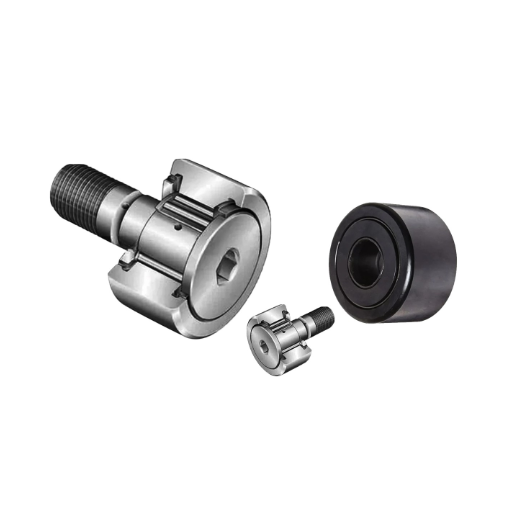
Exploring Track Followers and Their Uses
Track followers, or tracking followers, are followers that have either a single or double-row bearing that guides motion along a track. With thick walls of an outer ring, an internal bearing assembly, a stud or shaft for mounting, and a bolted load cap, these components maintain structural integrity while effectively distributing the loads. Track followers are used in applications where precision and repeatability are crucial and where high reliability and durability are needed, for example, in conveyor systems, modern material handling equipment, and automated machines.
Unlike other types of followers, track followers are capable of withstanding radial and axial loads simultaneously, as well as under multiple shifts of the center of rotation, which makes them suitable for complicated motion patterns. Other aspects of their design that promise versatility include crowned outer rings and smooth operation via a cylindrical-shaped outer ring, both of which enhance load distribution under alignment. Furthermore, the majority of track followers are manufactured with new designs of seals and lubrication fittings, which makes it possible to allow contaminants to escape while maintaining lubrication for parts that can get clogged by debris or moisture in a hostile working environment.
Packaging, automotive assembly, and heavy equipment manufacturing industries rely on track follows due to their strength, low maintenance, and long lifespan. With advancements in materials and precision engineering, track followers possess even greater wear, corrosion, and fatigue resistance, expanding their use across rugged industrial applications.
Understanding Heavy-Duty and Standard Variants
Followers are divided into heavy-duty and standard types, each fulfilling separately specified operational needs. Heavy-duty track followers are built for extremely high load capacities and harsh environmental conditions. These variants usually employ better materials, like high-grade bearing steels, and use advanced heat treatments for greater strength and resistance to weakening. Under heavy or continuous heavy loading, or in applications involving impact forces, heavy-duty track followers with larger roller diameters, outers, and advanced internal seating geometries will still perform reliably.
Standard track followers, in contrast, are designed to moderate load applications and bust fields with less severe operating conditions. They provide industry-grade solutions for businesses faced with sophisticated motion control challenges, which do not require resources to be spent unnecessarily. Even with basic construction in comparison to the heavy-duty counterparts, the standard variants indeed outperform expectations in reliability and performance. Factors like seals, lubrication grooves, and other assisting design features guarantee sustained effortless function below friction and wear thresholds.
Businesses typically pick from these options based on factors like load strength, environmental impacts, intended useful life, and economic viability. Mining, material handling, and construction equipment utilize heavy-duty track followers due to their rugged design,n while standard variants are used in less strenuous applications such as automated assembly lines or conveyor systems. With this classification, it guarantees that the choice of track follower maximizes both performance and economic value.
Applications of Cam Follower Bearings
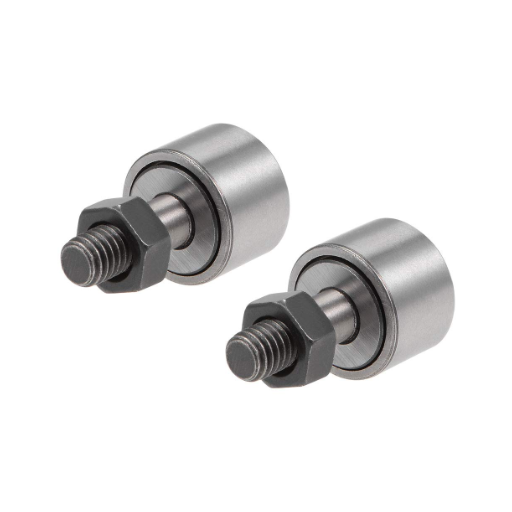
Industrial Uses: Conveyor Systems and Camshaft Applications
Cam follower bearings aid in the operation of conveyor systems and camshaft-driven systems where precision and ruggedness are required. Conveyor systems are extensively used in the packaging, manufacturing, and logistics industries and depend on cam followers for the proper functioning of belts and rollers under changing loads. The bearings aid in supporting systems while reducing wear and friction, thus extending system life and reducing maintenance costs.
In camshaft applications, cam followers perform pivoting for linear movements on constituent parts of the engine and machinery. This is salient in automotive engines where cam followers control the valve timing and allow precise actuation for optimum engine performance. Enhanced efficiency and load-bearing capabilities, a high-speed performance, are achievable due to the use of high-grade materials and advanced engineering designs such as needle-roller configurations. Surface coating and lubrication systems have also advanced to improve the life of cam followers, making them essential in high-demand places.
Material science and the evolution of technologies have further advanced the performance and reliability of cam follower bearings, rendering them adaptable to new industrial application challenges.
Role of Cam Followers in Food Processing
Cam followers are very important for maintaining accuracy and ensuring dependability in food processing machinery. The food industry has strict standards for its components, requiring precision during clear, sanitized settings subjected to heavy loads and repetitive actions. Here’s a snapshot of five primary features and benefits of cam followers in food processing equipment:
- Transporting and Conveying Materials: In manufacturing conveyor systems, cam followers are essential for the movement of both ingredients and finished items. Their capabilities enable cam followers to take on large loads whilst ensuring precise movement to reduce product loss and damage.
- Positioning in Packaging Systems: Precision technology used in filling, sealing, and labeling packaging equipment makes use of cam followers, allowing activation during a smooth automated robotic process, ensuring accuracy in every stage. This makes it possible to package more products without worrying about product damage and waste.
- Hygiene and Safety Standards Compliance: With FDA and HACCP requirements, cam followers that are specially designed for food-grade applications are made of stainless steel, sealed with corrosion-resistant food-safe lubricant, making contamination removal easier and eliminating the need to use harsh cleaning materials.
- Durability in High-Temperature Operations: Some procedures in food processing, such as baking and drying, subject the processing machinery to increased temperatures. The new cam followers made of heat-resistant materials allow for greater heat withstanding without any performance changes, thus avoiding repairs from wear or faults.
- Noise and Vibration Reduction in Processing Lines: Newer models of cam followers focus on noise and vibration reduction while the part is in motion, adding to the ergonomic value of the workstation without damaging any sensitive food parts. These characteristics are very important to anyone who works in a smooth and quiet environment.
Food processing and manufacturing industries equip their machinery with high-performance cam followers to improve production efficiency, meet the set industry standards, and lower operational costs.
Why Cam Followers Are Used in Thrust Loads
Cam followers assist in controlling the cam thrust load in a mechanical system because they can take thrust force while rotating. This function is different from that of a bearing, wherein cam followers for a thick outer ring and the whole is filled with either high-capacity needle roller or ball bearings, hence better able to withstand load concentration. This is especially critical for applications involving high thrust forces so that there will not be excessive damage to the wear and tear of the machinery part.
Thrust loads, which are mostly encountered with conveyor belts, rotary tables, or indexing mechanisms, can cause extreme bearing dispositional misalignment and put great pressure on rotary bearings. These risks are surrounded by cam followers balanced and controllable thrust loads, retaining high bearing power because of the geometric tolerances they were manufactured. Another is the property of accommodating both radial and axial loads, making it easier for forces coming from all directions, which increases the cam follower’s usage in hard machines.
Improved thrust load capacity has been made possible because of the development of cam follower lubricating techniques, corrosion-resistant stainless steel, or heated alloys. These factors became crucial in industries that practice high volume production and processing because if they remain functional with cam followers, low maintenance mingled with longer operational downtime, these become maintenance critical.
How to Choose the Right Cam Follower

Determining Load Capacity and Diameter
Estimate the load capacity and diameter for a cam follower with precision. Examine the case’s operating environment, mechanical needs, and design features. Begin by determining the radial and thrust load limits of the cam follower during its operational cycle. Radial load is the “outward” force acting perpendicular to the shaft’s body axis. Axial thrust load is the component of force acting parallel to the shaft’s body axis.
Also, pay attention to working temperature and humidity as well as contaminants like dust and chemicals, since these factors, together with the speed of rotation, have a considerable influence on the performance and life of the part. For some high-speed applications, larger diameter cam followers with superior material properties, like heat-treated rolling elements, may need to be utilized in order to avoid premature wear. There is also the issue of the contact surface between the cam follower and the track, which should have the appropriate load-bearing and diameter requirements in order to reduce stress concentrations and improve the uniformity of the load distribution.
Modern cam followers are more frequently classified using dynamic and static load ratings, thus highlighting the importance of picking a component that will sustain both repetitive operational stresses and the stationary or startup loads. Assistance in picking the most optimal one for performance and safety under highly demanding conditions can be obtained through advanced simulation tools or technical consultants.
Importance of Outer Ring Design: Cylindrical vs. Crowned
The outer ring design of a cam follower is critical regarding load distribution, wear resistance, and operational efficiency. Cam followers’ outer rings are cylindrical since they are on a constant profile and contact flat surfaces, which makes for easier rotation. Furthermore, this profile suits any case where the surface is subjected to uniform loading without high biasing misalignment. However, if small alignment problems arise, cylindrical rings are more prone to edge loading, causing increased localized wear over time.
Crowned outer rings are different since they include a profile that mitigates the impacts of misalignment. Such misalignment allows for the application of load on a larger area of contact, which helps in lessening stress and the chances of early breakdown. In oscillating devices, construction with crowned outer rings is useful in cases where deflections, vibrations, or slight misalignments occur and where alignment issues are common.
A decision regarding these two configurations can be made only after comprehensively analyzing region-specific factors such as operating loads, alignment tolerances, temperature, and several other external factors. Data obtained from fatigue testing shows that in most cases, crowned profiles outperform the competition when it comes to prolonged use under variable loading and continuously changing alignment problems, while cylindrical contours do best with unmoving precision setups. Both approaches are supplied with modern material technologies and manufacturing methods, which improve the performance of both crown and cylindrical outlines and allow engineers to adjust their preferences according to the demands of contemporary mechanical systems.
Factors to Consider: Tolerance and Mounting Options
The need to comply with tolerance requirements must reflect the practical application and operating environment of the component or system. Tolerance is defined as the acceptable or permissible variation of a dimension that affects the component’s fit, function, and overall performance. For highly sensitive systems such as those pertaining to aerospace or medical devices, tighter tolerances are required to eliminate the gaps between moving parts and provide their full functionality during severe operating conditions. On the other hand, heavy machinery applications are more lenient with tolerances and do not account for the effects of thermal expansion or material deformation under load.
The components’ alignment and position granularity, as well as ease of installation for the elements, are determined by the mounting options. Operational requirements and environmental conditions also dictate a variety of mounting methods, for example, press fits, bolt-on on or flange fittings. Some applications, such as those directly subjected to violent vibrations or dynamic loads, may exploit the advantages of mounts that can be firmly locked yet enable slight adjustability. The relationship between mounting configuration and system performance is very intricate, and owing to reliability and longevity, it must be understood.
In my opinion, solving tolerances and mounting has an aesthetic blend of precision and practicality. It would help if you vividly described the operational environment, including thermal and load expectations, to define tolerances accurately. Also, failure avoidance strategies should be developed to select mounting systems that work with these tolerances and complex failures. It is possible to achieve performance balance with cost and durability by conforming to system requirements.
Maintenance and Care of Follower Bearings

How to Ensure Proper Lubrication and Prevent Contamination
Controlling the lubrication and contamination of follower bearings is essential for optimizing their functionality and increasing their operational lifespan. Proper lubrication practices minimize overheating, wear, and friction while also helping to release heat generated during operations. Attention must be paid regarding the lubricant used, considering the operational temperature, load-bearing capacity, and speed of the follower bearing. It is advisable to provide the lubricant in the right quantity and at equal time intervals to avoid under- or over lubrication, to avoid excessive heat caused by too much lubricant or bearing failure caused by not enough lubricant.
In an effort to eliminate contamination, the bearings should be protected from external contaminants like dirt, dust, and moisture using proper sealing devices. Dirt tends to render lubricants useless by destroying their physical and chemical integrity, along with rapidly chewing away at bearing surfaces and causing rusting damage. It is equally important for users to use proper maintenance tools because there is no need for wear and tear by protecting the seal from breaches. In addition, users who are involved in the maintenance of mascaras should put on gloves as well as around the eyes and brows of the face to ensure against contamination.
Embracing today’s technologies, like automatic lubrication systems, sharpens precision and reduces human error in tedious maintenance work. These systems provide precise lubricant amounts at specific intervals, which mitigates downtime. Adopting such practices will improve lubricated bearing failure rates and reduce the possibility of breakdowns in industrial applications.
Tips for Extending the Life of Your Needle Roller Bearings
- Supplementary Lubrication
For proper lubrication practices on needle roller bearings, choose lubricants that match your application’s operating conditions. This could be servicing extreme temperatures or heavy loads, for example. Bear in mind to follow the manufacturer’s guidelines, including viscosity and re-lubrication intervals, in order to maintain performance. This will reduce friction and wear for the component.
- Accurate Installation
Not aligning the components while installing them will lead to failure. To circumvent this, make sure that the parts are clean, aligned, and devoid of any form of debris. Ensure that a bearing is installed using a hydraulic or mechanical press-fit method. This will lower the chances of damaging the structure of the needle bearings.
- Regular Maintenance and Inspection
Use monitoring tools such as thermal imaging or vibration analysis to detect problems before they grow out of control. Create periodic maintenance checklists to have visual inspections on the bearings to determine wear, fatigue, and contamination. Being able to assess condition tools will make sure work is done before it escalates into larger issues.
- Protect Against Contaminants
Components of needle roller bearings have delicate parts that can easily be damaged due to dirt, moisture, or metal contaminants. Make sure to keep the environment clean and utilize seals or shields to avoid foreign objects from accessing the system. These practices will greatly improve the life span of the components.
- Check Operating Loads and Speeds of the System
If the set limits for speed or load are exceeded, overheating as well as structural damage may occur. Always make sure you don’t set the bearing beyond specified limits to prevent overbearing stress, which could accelerate failures on the bearing.
- Employ Advanced Coatings or Materials
Where the application is more demanding, bearings made from advanced materials or with specialized coatings—anti-corrosive or wear-resistant—could do the trick. These changes would help to maximize the utilization of bearings in hostile situations while prolonging their lifespan.
With these guidelines in place, you can readily improve the lifespan of needle roller bearings, slash maintenance expenditure, and enhance system reliability throughout various industrial uses.
Frequently Asked Questions (FAQ)
Q: What are cam follower bearings?
A: Cam follower bearings, also known as track followers, are a type of roller bearing designed to follow a cam profile or track, converting rotary motion into linear motion. They are often used in cam or track roller applications.
Q: What is the difference between stud-type cam followers and yoke-type cam followers?
A: Stud-type cam followers have a built-in threaded stud for easy mounting, while yoke-type cam followers have a hole through the center, allowing them to be mounted on a shaft. Both types are used in different track roller applications with moderate loads.
Q: How do cam followers help prevent contamination and retain lubrication?
A: Many cam followers are sealed to help prevent contamination and retain lubrication, ensuring long-lasting performance and reduced maintenance.
Q: What are eccentric cam followers?
A: Eccentric cam followers have an offset stud that allows for adjustable alignment. This feature is useful in applications where precise positioning is necessary.
Q: How do yoke rollers differ from standard bearing and bolt configurations?
A: Yoke rollers utilize a yoke-style design with a cylindrical outer ring, offering high load capacity and the ability to follow tracks more effectively than standard bearing and bolt configurations.
Q: Why is anti-friction important in cam followers?
A: Anti-friction properties in cam followers reduce wear and tear, increase efficiency, and extend the lifespan of the bearing by minimizing resistance during operation.
Q: What materials are commonly used in the construction of cam followers?
A: Cam followers are often made from chrome steel that is induction hardened to enhance durability and performance under stress.
Q: What type of roller configurations are available for cam followers?
A: Cam followers are available in various configurations, including full complement designs and those with tapered roller bearings, to suit different application needs.
Q: Where are cam followers typically used?
A: Cam followers are commonly used in conveyors or process transfer lines, where they convert rotary motion into linear motion efficiently.
UCTH213-40J-300 with Setscrew(inch)
CNSORDERNO: Normal-duty(2)
TOGN: UCTH213-40J-300
SDI: B-R1/8
SD: 2 1/2
UCTH212-39J-300 with Setscrew(inch)
CNSORDERNO: Normal-duty(2)
TOGN: UCTH212-39J-300
SDI: B-R1/8
SD: 2 7/16
UCTH212-38J-300 with Setscrew(inch)
CNSORDERNO: Normal-duty(2)
TOGN: UCTH212-38J-300
SDI: B-R1/8
SD: 2 3/8
UCTH212-36J-300 with Setscrew(inch)
CNSORDERNO: Normal-duty(2)
TOGN: UCTH212-36J-300
SDI: B-R1/8
SD: 2 1/4
UCTH211-35J-300 with Setscrew(inch)
CNSORDERNO: Normal-duty(2)
TOGN: UCTH211-35J-300
SDI: B-R1/8
SD: 2 3/16
UCTH211-34J-300 with Setscrew(inch)
CNSORDERNO: Normal-duty(2)
TOGN: UCTH211-34J-300
SDI: B-R1/8
SD: 2 1/8










